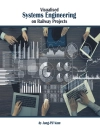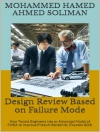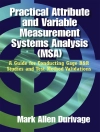This book presents cutting-edge research on innovative human systems integration and human–machine interaction, with an emphasis on artificial intelligence and automation, as well as computational modeling and simulation. It covers a wide range of applications in the areas of design, construction and operation of products, systems and services, and discusses the human factors in a wide range of settings.
Gathering the proceedings of the 3rd International Conference on Intelligent Human Systems Integration (IHSI 2020), held on February 19–21, 2020, in Modena, Italy, the book’s goal is to advance the theory and applications of artificial cognitive systems and improve human-artificial systems collaboration. Special emphasis is placed on automotive design, autonomous vehicles and the applications of artificial intelligence. The book offers a timely survey and source of inspiration for human factors engineers, automotive engineers, IT developers and UX designers who are working toshape the future of automated intelligent systems.
विषयसूची
User-centered Design within the Context of Automated Driving in Trucks – Guideline and Methods for Future Conceptualization of Automated Systems.- Towards Probabilistic Analysis of Human-System Integration in Automated Driving.- Trust provisioning in the transport infrastructure.- Drivers’ interaction with, and perception toward semi-autonomous vehicles in naturalistic settings.- Are Autonomous Vehicles the Solution to Drowsy Driving.- Exploring new concepts to create natural and trustful dialogue between humans and intelligent autonomous vehicles.- Integrating Human Acceptable Morality in Autonomous Vehicles.- The future of user experience design in the interior of autonomous cars driven by AI.- Measuring Driver Discomfort in Autonomous Vehicles.- Human-Centered Design for Automotive Styling: conceptualizing a vehicle from QFD to Vi P.- Enriching the User Experience of a Connected Car with Quantified Self.- Constructing a Mental Model of Automation Levels in the Area of Vehicle Guidance.- Effect Of Phone Interface Modality On Drivers’ Task Load Index In Conventional And Semi- Automated Vehicles.- Software Failure Mode and Effects Analysis.- A Validated Failure Behavior Model for Driver Behavior Models for Generating Skid-Scenarios on Motorways.












